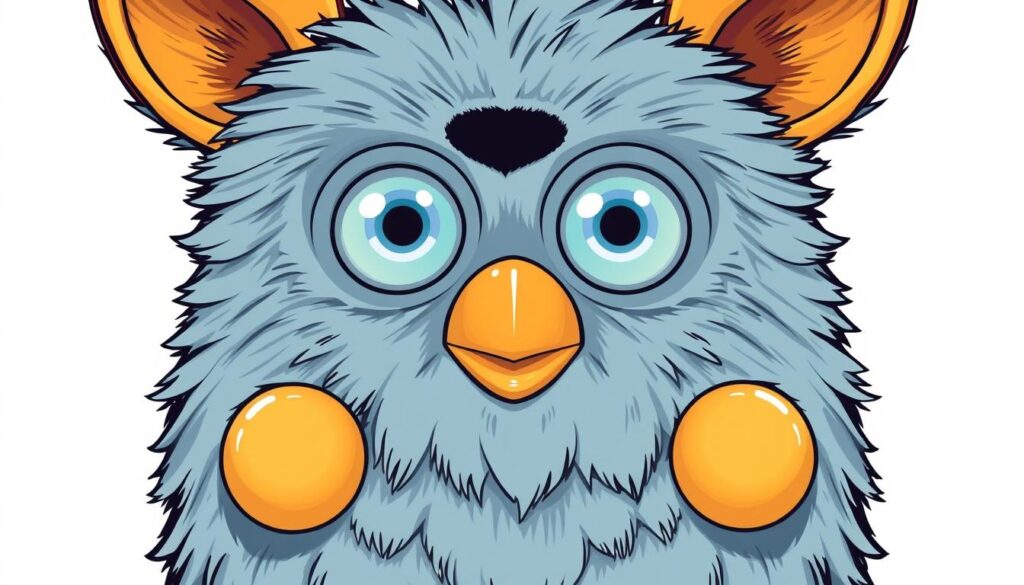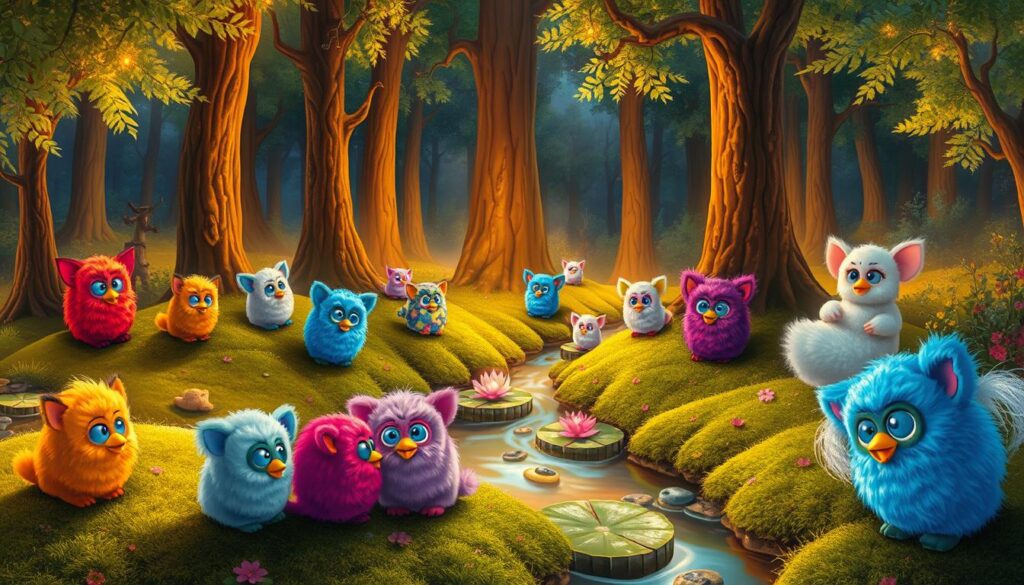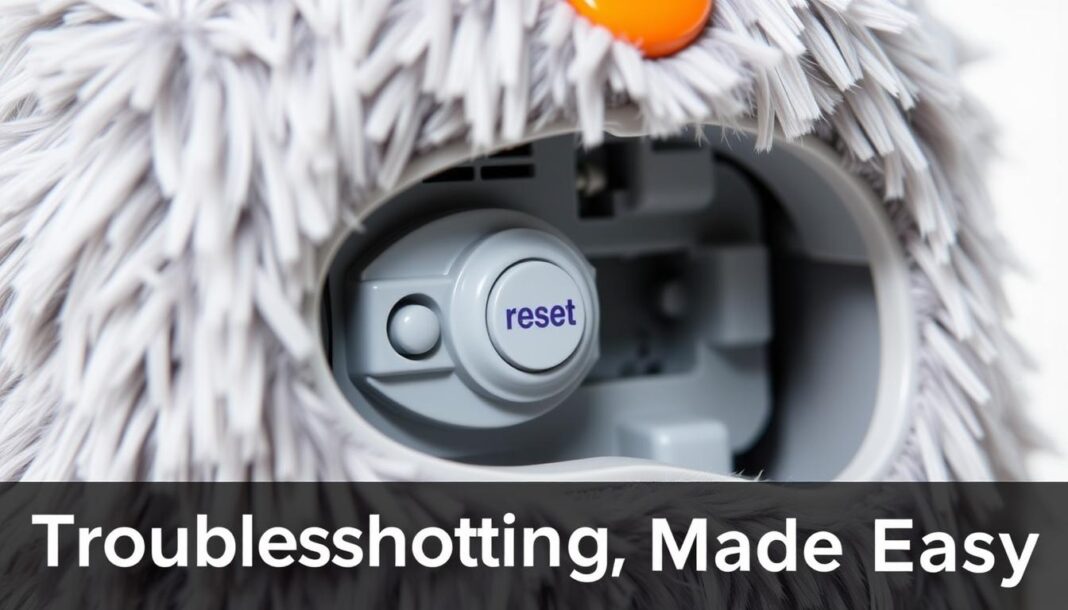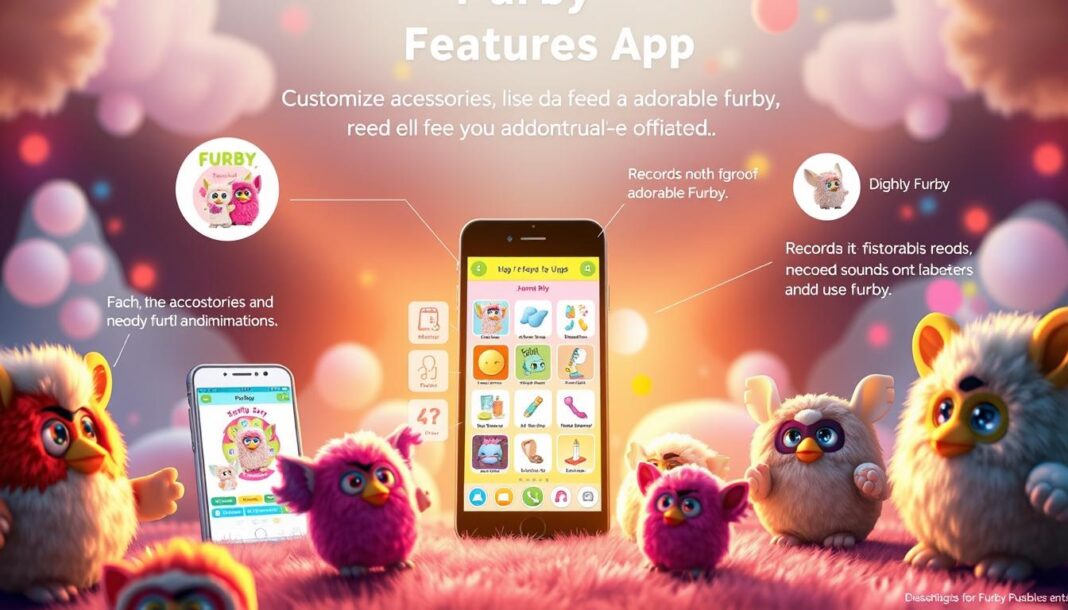In the late 1990s, a revolutionary electronic pet captured the hearts of many, becoming a cultural phenomenon. The first generation of this iconic creature was launched in 1998 by Tiger Electronics, and it quickly became a “must-have” during the holiday season.
With its ability to “learn” English and interact with other similar creatures, it was a technological marvel of its time. This electronic companion was translated into 14 languages, making it a global sensation and securing its place in the world of toys.
We will explore the history, features, and cultural impact of this groundbreaking electronic pet, and understand why it continues to hold nostalgic value decades after its initial release.
The Birth of a Phenomenon
The Furby phenomenon began with a fascinating story of creation and innovation. The journey to bring this beloved toy to life involved several key players and a significant amount of time and effort.
Creation and Development
Dave Hampton and Caleb Chung, the inventors of Furby, spent nine months creating the concept and another nine months designing the physical toy. After two attempts at licensing the concept, they partnered with fellow toy and game inventor Richard C. Levy to bring Furby to market. Levy successfully brought Furby to Tiger Electronics, where Roger Shiffman recognized its potential and purchased the rights.
1998 Launch and Initial Reception
Furby’s first public appearance was at the American International Toy Fair in 1998, where it immediately captured attention with its unique interactive capabilities. Initially retailing for about $35, Furby quickly became a sensation during the 1998 holiday season, with demand far exceeding supply. The unprecedented popularity led to a secondary market where Furbies sold for over $100, sometimes reaching several hundred dollars. In 1998 alone, Tiger Electronics managed to sell 1.8 million units, followed by 14 million in 1999, making it one of the fastest-selling toys in history.
| Year | Units Sold (in millions) | Average Resale Price |
|---|---|---|
| 1998 | 1.8 | $100-$300 |
| 1999 | 14 | Varies |
The success of Furby can be attributed to its innovative design and the effective marketing strategies employed by Tiger Electronics. The toy’s ability to interact with its owners and its unique language, known as “Furbish,” captivated both children and adults, contributing to its widespread popularity.
The Furby Toy Original: Features and Functionality

The original Furby toy was a marvel of its time, packed with innovative features that captivated children and adults alike. One of its most notable features was its ability to communicate in “Furbish,” a unique language that consisted of 42 different words forming hundreds of phrases.
Furbish Language and Learning Capabilities
The Furby toy original started by speaking entirely “Furbish,” but was programmed to gradually learn English (or other languages) over time, creating an illusion that it was learning from its owner. This adaptive language learning capability was a significant part of its appeal, making it seem like a living creature that could evolve and grow.
This learning process was not just limited to language; the Furby could also interact with its environment and other Furbies. It used an infrared port located between its eyes to communicate with other Furbies, adding a new dimension to its interactivity.
Sensors and Interactive Elements
The Furby’s sensory capabilities included light sensors that detected brightness changes and touch sensors that responded to petting. These features allowed the Furby to react to its environment, making it seem more lifelike and engaging.
The combination of these sensors and the infrared port enabled a wide range of interactions, from responding to touch to communicating with other Furbies. This level of interactivity was unprecedented at the time and contributed significantly to the Furby’s popularity.
Movement and Mechanics
A simple yet ingenious electric motor and a system of cams and gears controlled the Furby’s movements, including closing its eyes and mouth, raising its ears, and even lifting it off the ground in a faux display of mobility. The Furby was capable of using more than 300 different unique combinations of ear, mouth, and eye movements, creating a surprisingly expressive range of emotions and reactions.
The Furby’s fur came in various colors and patterns, with different eye colors creating numerous unique combinations. This variety added to the toy’s appeal, making each Furby distinct.
The technical ingenuity behind fitting adaptive language learning, sensors, and full-body movement into a compact toy with just one motor represented groundbreaking engineering for its time. The original Furby editions were a testament to the innovation and creativity of its creators.
Furby Fever: Cultural Impact and Popularity
As we explore the cultural impact of the Furby, it’s clear that its influence extended far beyond the toy box. The Furby phenomenon was a significant cultural event that reflected the growing interest in interactive technology and artificial intelligence in consumer products.
![]()
Holiday Season Demand and Shortages
During the 1998 Christmas season, the demand for Furbies skyrocketed, leading to a shortage that fueled a thriving resale market. Furbies were selling for over $300 in newspapers and at auctions, with some sellers assigning rarity values to different variations. This unprecedented demand created a frenzy among consumers, with parents standing in long lines and stores implementing purchase limits to manage the high demand.
The significant price inflation led to cases of fraud, where customers paid for Furbies that were never delivered. This situation highlighted the intense desire for the toy and the willingness of consumers to pay premium prices to get their hands on one.
Media Coverage and Controversies
The Furby phenomenon received extensive media coverage, appearing on television news, magazine covers, and even in comedy sketches. However, not all attention was positive; the Furby was also at the center of controversy. In 1999, the Pentagon, NSA, and Norfolk Naval Shipyard banned Furbies due to concerns that they could record and repeat classified information.
This misconception about the Furby’s capabilities highlighted both the public’s fascination with and misunderstanding of the technology. Despite the controversy, the Furby remained a cultural icon, symbolizing the dawn of a new era in interactive toys. The Furby’s impact was felt not just in the United States but around the world, as it became a sought-after toy during the holiday season.
As we look back, it’s clear that the Furby was more than just a toy; it was a cultural phenomenon that captured the imagination of people at the time and in a specific place, leaving a lasting legacy in the world of consumer electronics and interactive play.
Original Furby Models and Variations
Delving into the world of original Furby models, we uncover a fascinating array of colors, editions, and special releases that contributed to the toy’s immense popularity and collectibility.
Standard Color Variations
The original Furby line featured an impressive array of 48 standard color variations, each with unique fur patterns and color combinations. Collectors quickly began categorizing these with nicknames like “Snowball,” “Tuxedo,” and “Leopard.” We provide a comprehensive list of these standard Furby colors and their distinguishing characteristics, helping collectors identify specific models.
| Color Variation | Description |
|---|---|
| Snowball | White fur with distinctive markings |
| Tuxedo | Black and white fur, resembling a tuxedo |
| Leopard | Spotted fur pattern |
Special Editions and Limited Releases
The special editions category included 22 different limited-release Furbies created for particular events, holidays, or retail partnerships. Examples include the Angel Furby, President Furby, and the extremely rare Kid Cuisine promotional Furby. Some of these special edition Furbies are highly sought after by collectors.
Notable special editions include the Bejewelled Furby, which retailed for $100,000, and the Rainbow Furby contest winner, of which only three were ever produced. These rare Furbies showcase the creativity and exclusivity that defined the special edition line.
Fresh New Look Furbies
The Fresh New Look Furbies represented a refresh of the original line with slight modifications to the fur patterns, colors, and sometimes internal components. This created additional collectible versions that appealed to both new and seasoned collectors. The fresh new designs maintained the essence of the original Furby while offering something new and exciting.
With over 1,000 unique Furby combinations possible through different fur colors, eye colors, and voice pitches, the collecting experience became highly personalized. This diversity ensured that each Furby was distinct, making the line incredibly diverse and engaging for collectors.
Furby Friends and Subsequent Generations
Beyond the original Furby, Hasbro released several new models and companions that enhanced the Furby experience. These new additions not only expanded the Furby universe but also introduced fresh features and interactive capabilities.

Furby Babies (1999)
In 1999, the Furby Babies line was introduced, featuring smaller versions of the original Furby with higher-pitched voices. These Furby Babies learned English more quickly than their adult counterparts and came in 24 different color variations. They also included extended vocabulary and special “Easter eggs” that differentiated them from the original Furbies.
Shelby and Other Companions
Another “friend of Furby,” called Shelby, was released in 2001. Shelby resembled a clam, had improved memory, and a distinct personality. It could communicate with both original Furbies and Furby Babies, expanding the interactive play possibilities.
Evolution Through the Years
The Furby line continued to evolve with the release of the Emoto-Tronic Furby in 2005, featuring more sophisticated facial movements and voice recognition. The 2012 Furby relaunch introduced LCD eyes and new interactive features. The Furby Boom in 2013 added a companion app for iOS and Android, further enhancing the Furby experience. Subsequent releases, including the Furby Connect in 2016 with color LCD eyes and Bluetooth connectivity, and the latest Furby with five voice-activated modes and Furby Furblets in 2023, demonstrated the ongoing innovation in the Furby line.
The introduction of the Furby Boom Crystal Series in 2014, with its bright neon fur and redesigned features, continued the modernization of the line. The Furby Connect World app created a virtual environment for play, showcasing the integration of technology and interactive play.
Inside the Furby: Technical Specifications
Delving into the technical specifications of the original Furby reveals a sophisticated device for its era. The Furby was more than just a cuddly toy; it was a miniature technological marvel that captured the imagination of many.
Hardware and Programming
The original Furby was built around a 6502-style Sunplus SPC81A microcontroller, which had 80 KiB of ROM and 128 bytes of RAM. Its core differed from the original 6502 in the lack of the Y index register. The source code was written in assembly language for the 6502 microprocessor, requiring extremely efficient code to create the illusion of intelligence within such limited memory constraints. The voice synthesis was handled by a TSP50C04 chip from Texas Instruments, implementing linear predictive coding, which allowed the Furby to produce a range of sounds and phrases in multiplelanguages.
| Component | Description | Specification |
|---|---|---|
| Microcontroller | Sunplus SPC81A | 6502-style, 80 KiB ROM, 128 bytes RAM |
| Voice Synthesis Chip | TSP50C04 | Linear Predictive Coding, Texas Instruments |
| Programming Language | Assembly Language | For 6502 microprocessor |
Security Concerns and Misconceptions
Despite its impressive technology, the Furby was subject to security concerns and misconceptions. On January 13, 1999, it was reported that the National Security Agency (NSA) of the United States banned Furbies from entering NSA’s property due to concerns that they may be used to record and repeat classified information. However,Roger Shiffman, the owner ofTiger Electronics, stated that “Furby has absolutely no ability to do any recording whatsoever.” Demonstrations showed that Furby’s microphone could not record any sound, only registering loud noises as simple beeps.
The Enduring Legacy of the Original Furby
As we reflect on the Furby phenomenon, it’s clear that its influence extends far beyond its initial success. The 1998 Furby was more than just a popular toy; it represented a significant shift in interactive electronic toys, creating unprecedented demand during the holiday season.
The original Furby’s legacy is multifaceted. It not only paved the way for subsequent generations of interactive toys but also spawned numerous editions and special editions, including Furby Babies. The collectible market for original Furbies remains robust, with rare variants commanding high resale prices.
Today, the Furby line continues to evolve, incorporating new technologies and features, such as app connectivity. The release of new Furby models demonstrates Hasbro’s commitment to maintaining the brand’s relevance. As a result, the Furby remains a beloved toy, bridging generations and fostering a continued interest in interactive electronic companions.


